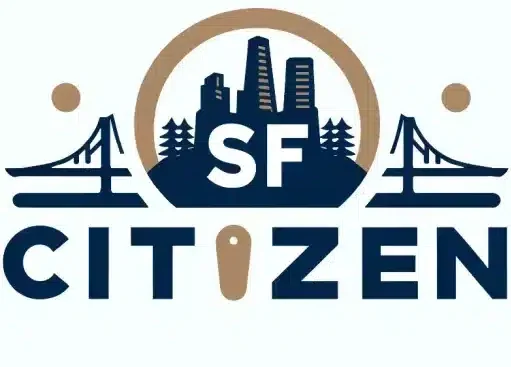San Francisco’s Human Services Agency (HSA) serves over 250,000 individuals annually, providing essential support to the city’s most vulnerable residents. As a critical component of the city’s social safety net, HSA works tirelessly to promote well-being and self-sufficiency among San Franciscans.
In This Article
Key Points
- The San Francisco Human Services Agency plays a vital role in supporting the community’s most vulnerable populations.
- Community Benefit Districts have a significant impact on local social services in San Francisco.
- The SF Community Health Needs Assessment helps shape public health policies and priorities.
Life in San Francisco: A Social Services Perspective
Understanding the Social Environment
San Francisco’s unique social environment presents both challenges and opportunities for social service providers. With a diverse population and a high cost of living, the city must adapt its services to meet the needs of its residents effectively.
Addressing Food Insecurity
Food insecurity remains a pressing issue in San Francisco, with many residents struggling to access healthy, affordable meals. The city has implemented various initiatives and programs to tackle this problem, including:
- The CalFresh program, which provides monthly food benefits to eligible low-income households
- Partnerships with local food banks and charitable organizations to distribute meals and groceries to those in need
Enhancing Economic Self-Sufficiency
Promoting economic self-sufficiency is a key goal of San Francisco’s social services. The city offers a range of programs designed to help residents build skills, find employment, and achieve financial stability, such as:
- The JobsNOW! program, which connects job seekers with employers and provides subsidized employment opportunities
- The Family & Children’s Services program, which offers case management, counseling, and support services to help families achieve self-sufficiency
Politics, History, and Civil Services: Shaping San Francisco’s Social Landscape
The Evolution of Social Services in San Francisco
San Francisco’s social services have evolved over time, shaped by historical milestones and political decisions. From the establishment of the city’s first public hospital in 1857 to the creation of the Department of Public Health in 1899, San Francisco has a long history of prioritizing the well-being of its residents.
San Francisco’s Public Health and Safety Framework
San Francisco’s commitment to public health and safety is evident in its robust framework of initiatives and partnerships. The San Francisco Health Improvement Partnership (SFHIP) brings together a diverse group of stakeholders to identify and address the city’s most pressing health needs.
Community Development and Engagement
Effective social services require strong community development and engagement. San Francisco employs various strategies to enhance neighborhood activation and involve residents in the planning and implementation of social services, such as:
- The Community Benefit Districts program, which enables property owners to collectively fund and manage neighborhood improvements
- The Community Engagement Program, which facilitates dialogue between city agencies and community members to inform policy and program development
San Francisco’s Approach to Health and Human Services
Comprehensive Health Services
San Francisco’s Health Services department provides a wide range of programs and services designed to promote the physical, mental, and social well-being of residents. These services are delivered through a network of community-based organizations, clinics, and hospitals, ensuring accessibility and cultural sensitivity.
Supporting Vulnerable Populations
San Francisco places a strong emphasis on supporting its most vulnerable populations, including the homeless, low-income families, and individuals with disabilities. Programs like the SF Homeless Prenatal Program provide comprehensive services to pregnant women and families experiencing homelessness, helping them access stable housing, healthcare, and social support.
Planning and Policy Framework
The San Francisco Planning Code and Health Care Service Master Plan provide a comprehensive framework for promoting community health and integrating civil services. These policies aim to ensure that all residents have access to high-quality, affordable healthcare and social services.
Community Initiatives and Partnerships
Community Benefit Districts and Their Impact
San Francisco’s Community Benefit Districts (CBDs) have a significant impact on local social services. These public-private partnerships enable property owners to fund and manage supplemental services, such as:
- Cleaning and maintenance of public spaces
- Public safety and hospitality services
- Marketing and promotion of local businesses and events
A recent analysis of CBDs in San Francisco found that they generate over $32 million in assessment revenues annually, with 70% of these funds supporting cleaning, safety, and economic development services.
San Francisco’s Charitable Hospitals and Coalitions
Charitable hospitals play a crucial role in San Francisco’s social services ecosystem, providing essential healthcare services to underserved populations. Organizations like the San Francisco Community Clinic Consortium bring together a network of community-based health centers to improve access to care and promote health equity.
FAQ
What is the San Francisco Human Services Agency?
The San Francisco Human Services Agency (HSA) is a city department responsible for providing a wide range of social services to residents, including food assistance, employment services, and support for families and children.
How do Community Benefit Districts affect social services in San Francisco?
Community Benefit Districts (CBDs) are public-private partnerships that enable property owners to fund and manage supplemental services in their neighborhoods, such as cleaning, safety, and economic development. These services complement and enhance the social services provided by the city.
What is the SF Community Health Needs Assessment?
The SF Community Health Needs Assessment is a comprehensive report that identifies the most pressing health needs and priorities in San Francisco. It is conducted by the San Francisco Health Improvement Partnership (SFHIP) and informs public health policies and programs.
How does San Francisco address food insecurity among its residents?
San Francisco addresses food insecurity through a combination of public programs, such as CalFresh, and partnerships with local food banks and charitable organizations. These initiatives provide food benefits, meals, and groceries to low-income households and individuals in need.
What strategies are in place to support San Francisco’s vulnerable populations?
San Francisco employs a range of strategies to support its vulnerable populations, including the homeless, low-income families, and individuals with disabilities. Programs like the SF Homeless Prenatal Program provide comprehensive services, such as housing assistance, healthcare, and social support, to help these populations achieve stability and well-being.

